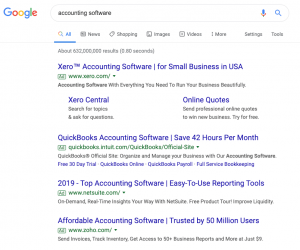Criminal fraud is nothing new in the eCommerce space. The problem has been growing year-by-year for two decades, leading to a gradual increase in merchant costs.
Data published by Aite Group suggests direct fraud losses will cost online merchants $ 6.7 billion in 2021. That doesn’t even account for the several billion more that will be lost by banks and other service providers who work with online merchants. Of course, that projection was also made before the COVID-19 crisis; as a result, fraud losses sustained next year will undoubtedly outpace expectations.
That’s bad enough on its own. However, those $ 6.7 billion in fraud losses are a drop in the bucket compared to the costs that merchants incur every year trying to stop fraud.
Merchants use a variety of indicators to spot fraud attempts. Sometimes they manage to successfully intercept a criminal attack. Other times, they generate a false positive and reject a legitimate transaction under the suspicion of fraud.
It’s hard to get a solid figure on the total amount lost every year from false positives. That said, projections vary from $ 88 billion on the low end, to an astounding $ 443 billion on the upper extreme, according to the study cited above. How is that even possible?
Sources of Loss with False Positives
How could false positives cost businesses hundreds of billions every year? Well, we must remember that the cost of an individual transaction is ultimately just a small portion of the losses associated with a declined sale.
When we think about the true cost of a false decline, we need to consider the ancillary losses. These include:
- Sunk Marketing Costs: When you decline a legitimate sale, you throw away all the costs of acquisition you invested in that purchase, like advertising.
- Overhead: You spend a portion of your revenue reviewing and rejecting bad transactions. Each false positive wastes the resources you invest in this process.
- Lost Customer LTV: After a bad experience, 39% of customers will avoid a company for two years. Rejecting a legitimate buyer means you could be rejecting future sales.
- Reputation Damage: Four in ten consumers will share their story with others when they have a bad customer experience, driving away other potential buyers.
Those are just a few examples. However, they exemplify why false positives are so costly, and why there is such a wide disparity in projections of their total cost.
The data by Aite suggests that 5% of all eCommerce transactions are falsely declined, at the upper-end of the projection. At the same time, nearly two-thirds of merchants report false declines are increasing. That raises an important question: if false declines are such a major problem in the online space, why do merchants write them off?
Transaction Data is Key to Identify Fraud
There’s a tendency among merchants to accept some false declines as a cost of doing business. They feel that there is a kind of irreducible minimum at play; to be an online merchant, you will inevitably lose some transactions due to false positives. There is either nothing you can do, or it’s simply not cost-effective to recapture those sales.
That doesn’t have to be the case, though. In fact, merchants already have the power to substantially reduce false positives, without seeing fraud losses rise. The answer lies in the data.
High-level data analysis makes it possible to identify broader trends in eCommerce and digital payments. We have the power to pick out recurring behaviors and other factors associated with fraud, and use those to segment legitimate fraud attacks more effectively. As a result, studies employing advanced automation and machine learning have been able to significantly reduce false positives in fraud detection.
Of course, individual merchants don’t have access to the kind of high-level data necessary to implement that kind of review. In most cases, the best solution is to partner with a third-party fraud mitigation service to offer fraud scoring on transactions.
Fraud scoring looks at an individual transaction and evaluates the purchase for typical fraud indicators. It then scores that transaction on the likelihood of a fraudulent purchase.
Fraud scoring is an extremely useful asset in detecting fraud attacks. To score transactions effectively, though, service providers need accurate and in-depth transaction data. This will be dependent on employing a range of complimentary tools beyond fraud scoring.
Use a Better Net
There isn’t a single magic tool or tactic that can simply make false positives disappear. Instead, you need to deploy complimentary tools and practices that can work side-by-side to give you a detailed impression of each transaction.
Imagine your fraud defenses like a net; the finer the mesh, the more effective it can be at catching fraudulent transactions, while still allowing good sales to pass through. The more refined and dynamic your fraud prevention, the finer the mesh.
You need to have both front-end, “knowledge-based” authentication tools, as well as backend fraud detection. With the former, we’re talking about tools that verify a user based on something known to that individual. For instance, CVV verification and 3-D Secure are both knowledge-based. In contrast, backend tools like address verification, geolocation, and velocity limits examine the details of a transaction for anomalies.
Deploying a wider range of fraud detection tools and practices won’t guarantee 100% accuracy in separating fraud from legitimate sales. However, it’s your best shot to help ensure that your customers are genuine, thus maximizing sales while minimizing fraud.
Digital & Social Articles on Business 2 Community
(52)
Report Post




